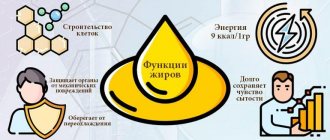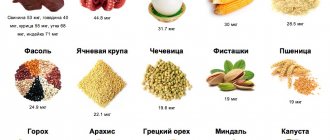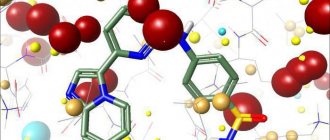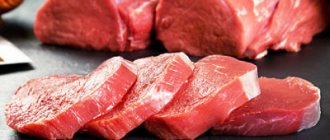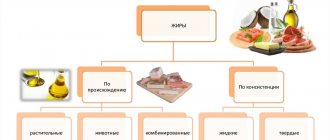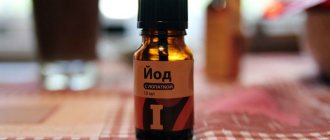What is protein
Proteins (proteins/polypeptides) are organic substances, natural polymers containing twenty interconnected amino acids. The combinations provide many views. The body copes with the synthesis of twelve essential amino acids on its own.
Eight of the twenty essential amino acids found in protein cannot be independently synthesized by the body; they are obtained from food. These are valine, leucine, isoleucine, methionine, tryptophan, lysine, threonine, and phenylalanine, which are important for life.
How much protein does a person need per day for muscle growth (men)?
There is fierce debate about this among strength training enthusiasts. Different numbers are given: from 1.5 to 4 g per 1 kg of weight. There is a middle ground promoted by most sports clubs. This number is 2. If someone is unable to build muscle with this amount of protein, then perhaps there are errors in nutrition:
- Single servings are too large. It is better to split your protein intake into small portions and eat no more than 30 g at a time.
- Plant proteins instead of animal proteins. We have already written that the entire set of amino acids is contained in proteins of animal origin. Plus, such nutrients are better absorbed by the body, which means they work.
- Lack of carbohydrates. For better absorption of proteins, you should eat them with carbohydrate foods.
What kind of protein is there?
There are animal and plant (based on origin). Two types are required.
Animal:
- Meat;
- Fish;
- Milk products;
- Eggs.
Egg white is easily and almost completely absorbed by the body (90-92%). The proteins of fermented milk products are slightly worse (up to 90%). The proteins of fresh whole milk are absorbed even less (up to 80%). The value of beef and fish is in the best combination of essential amino acids.
Vegetable:
- Cereals, cereals;
- Legumes;
- Soy;
- Nuts;
- Fruits.
Soybeans, rapeseed and cottonseeds have a good ratio of amino acids for the body. In grain crops this ratio is weaker.
There is no product with an ideal amino acid ratio. Proper nutrition involves a combination of animal and plant proteins.
The basis of nutrition “according to the rules” is animal protein. It is rich in essential amino acids and ensures good absorption of plant protein.
Proteins (proteins) are the basis of life. They come in animal and plant origin. Animal proteins are found in meat, fish, seafood, poultry, dairy products, and eggs. The ratio of amino acids they contain is closest to optimal for the human body.
Plant proteins are found in legumes, nuts, algae, chocolate, potatoes, and various grains. The human body needs both animal and plant proteins: they complement each other. The body's total daily need for protein is about 20% of the diet.
What is protein?
Proteins are a key part of every cell in the human body. They are high-molecular biological compounds and serve as “building materials” from which body tissues are built: muscles, skin, as well as hair and nails. They make possible all the basic manifestations of life: digestion, metabolism, the ability to grow, irritability of tissues, reproduction, and even the highest form of movement of matter - thinking.
A lack of protein in a child’s diet can lead to a sharp lag in his development, and in adults, the body’s resistance to colds and infectious diseases decreases, and the ability to work decreases.
The word "protein" comes from the Greek word "proteios", which means "ranking first". So this gives us a good idea of the importance of protein in the diet!
What are amino acids?
The main chemical elements that make up a protein molecule are carbon, hydrogen, oxygen, nitrogen, as well as sulfur, phosphorus and some other elements. Despite this, protein molecules are complex and infinitely diverse, just as the manifestations of life are diverse.
However, the common thing in the structure of proteins is that they consist of amino acids (AA). There are 20 types of protein molecules. Proteins that make up food products in the digestive tract, under the action of enzymes, break down into individual amino acids, which enter various tissues of the body, where new proteins are formed from them. It is AKs that are valuable elements for our body, and not proteins themselves.
There are two groups of amino acids – “essential” and “essential”:
- Nonessential AAs can be formed in the human body. These include alanine, asparagine, aspartic acid, glycine (glycocol), glutamine, glutamic acid, proline, serine, tyrosine, cysteine;
- Essential AAs cannot be synthesized in the human body and therefore must be obtained from food. These are arginine, valine, histidine, lysine, leucine, isoleucine, threonine, tryptophan, methionine, phenylalanine. If proteins contain the entire set of essential amino acids, then they are called biologically complete.
The more of these amino acids are present in food, the more complete it is and the better for building proteins in our body. Most plant proteins are missing one or two essential amino acids. For example, wheat protein contains only half of the required lysine, and potato or pea protein lacks about a third of methionine and cysteine. It should also be taken into account that plant proteins are less digestible than animal proteins. Thus, animal proteins are digestible by 95-96%, and vegetable proteins by 80% and even 70% in legumes and potatoes.
Passion for vegetarianism, that is, long-term consumption of plant foods, can lead to an imbalance of amino acids, which, naturally, will negatively affect many functions of the body, including mental activity. Modern nutrition science warns about this.
Functions of amino acids
Cell death occurs constantly in the human body. To create new cells to replace old ones, the same building material is required - protein. Not only the cytoplasm of cells is built from it, but also various hormones, enzymes and other biologically active substances that regulate metabolism.
Amino acids are the building blocks of protein that are rearranged in the human body to create:
Hormones:
Hormones are proteins that are produced by living cells. Hormones circulate in body fluids such as the blood and cause certain effects on other cells, which are usually some distance from where the hormone is produced.
For example: Adrenaline is a hormone that is produced by the body during times of stress and causes the heart rate and breathing to increase.
Enzymes:
They are complex proteins formed in plant and animal cells, and contribute to the transformation of some substances (substrates) into others (products).
Digestive enzymes, for example, help our bodies break down food into chemicals that can be absorbed into the blood.
Antibodies:
Antibodies are proteins produced by white blood cells in response to a foreign substance called an antigen, such as bacteria and viruses.
Hormones, enzymes and antibodies are just some of the substances that are ultimately formed in the body from food proteins.
Daily Protein Requirements
The amount of protein you need per day depends on various factors, including gender, age and level of physical activity. They should make up approximately 20% of your daily nutritional needs.
Lack of protein in the daily diet reduces immunity and contributes to the development of various diseases, including cancer. You can significantly increase immunity if you add 15 g of milk proteins (cheese) to the daily norm of 1 g/kg of weight.
Proteins are rarely used for energy. This is the job of carbohydrates and fats.
We hope this review has helped you better understand the importance of protein in your diet.
| Protein content (grams per 100 grams of products | |||
| Animal proteins | Plant proteins | ||
| Beef | 20 | Soybean seeds | 35 |
| Veal | 20 | Wheat germ | 25 |
| Pork | 17 | Cereals | 13 |
| Mutton | 15 | Sprouted rye grains | 13 |
| Boiled ham | 18 | Sprouted wheat grains | 12 |
| Raw ham | 15 | Sprouted barley grains | 10 |
| Black pudding | 24 | Corn grains | 9 |
| Sausage | 25 | Wholemeal bread | 9 |
| Chicken | 20 | Wholemeal pasta | 8 |
| Egg | 6 | Beans | 8 |
| Fish | 20 | Lentils | 8 |
| Dutch cheese | 35 | Chickpeas | 8 |
| Cottage cheese | 9 | White bread | 7 |
| Yogurt | 5 | Wheat semolina | 5 |
| Milk | 3,5 | White flour pasta | 3 |
| Curd cheese | 9 | Unrefined rice | 7 |
| Shrimps | 25 | Refined rice | 6 |
| Muesli | 9 | ||
| Soy cheese tofu | 3 | ||
| Soy flour | 45 | ||
| Soy milk" | 4 | ||
| Soybean germ | 4 | ||
Functions of protein in the body
Being in tissue cells, it performs many functions:
- Protective. The functioning of the immune system is the neutralization of foreign substances. Antibodies are produced.
- Transport. Supply of various substances, for example, hemoglobin (oxygen supply).
- Regulatory. Maintaining hormonal levels.
- Motor. All types of movement are provided by actin and myosin.
- Plastic. The condition of connective tissue is controlled by collagen content.
- Catalytic. It is a catalyst and accelerates the passage of all biochemical reactions.
- Preservation and transmission of genetic information (DNA and RNA molecules).
- Energy. Supplying the entire body with energy.
Others provide breathing, are responsible for the digestion of food, and regulate metabolism. The light-sensitive protein rhodopsin is responsible for visual function.
Blood vessels contain elastin, thanks to which they function fully. The protein fibrinogen ensures blood clotting.
Symptoms of lack of protein in the body
Protein deficiency is a fairly common occurrence due to poor nutrition and the hyperactive lifestyle of modern people. In a mild form, it is expressed in regular fatigue and deterioration in performance. As insufficient amounts increase, the body signals through symptoms:
- General weakness and dizziness. Decreased mood and activity, the appearance of muscle fatigue without much physical activity, deterioration in coordination of movements, weakening of attention and memory.
- The appearance of headaches and worsening sleep. Insomnia and anxiety indicate a lack of serotonin.
- Frequent mood swings, grouchiness. A lack of enzymes and hormones provokes depletion of the nervous system: irritability for any reason, unreasonable aggressiveness, emotional incontinence.
- Pale skin, rashes. With a lack of iron-containing protein, anemia develops, the symptoms of which are dry and pale skin and mucous membranes.
- Swelling of the limbs. Low protein content in blood plasma disrupts the water-salt balance. Subcutaneous fat accumulates fluid in the ankles and ankles.
- Poor healing of wounds and abrasions. Cell restoration is inhibited due to a lack of “building material”.
- Brittle and hair loss, brittle nails. The appearance of dandruff due to dry skin, peeling and cracking of the nail plate is the most common signal from the body about a lack of protein. Hair and nails are constantly growing and instantly react to the lack of substances that promote growth and good condition.
- Unreasonable weight loss. The disappearance of kilograms for no apparent reason is due to the body’s need to compensate for the lack of protein through muscle mass.
- Failure of the heart and blood vessels, the appearance of shortness of breath. The functioning of the respiratory, digestive, and genitourinary systems also deteriorates. Shortness of breath appears without physical exertion, cough without colds and viral diseases.
With the appearance of symptoms of this kind, you should immediately change the diet and quality of food, reconsider your lifestyle, and if they worsen, consult a doctor.
What is your test system?
Today you can get tested not just for IgG, but for two types of these immunoglobulins. Let's explain what the difference is and why it's important. The fact is that protective antibodies in our body are not produced to the virus as a whole, but to its individual proteins. Coronavirus has 4 main proteins, and two main proteins.
The first is the nucleocapsid protein, and the second is the spike protein.
The detection of IgG to the nucleocapsid protein means that a person has suffered from COVID-19 and his body has remembered the virus well and has managed to prepare all parts of the immune system, including T-cell immunity, to counteract it in the event of a second encounter. That is, the presence of such immunoglobulins in the body does not guarantee a person that he will not get sick again, but gives hope that next time the immune system will meet the enemy fully armed. It is by the level of these antibodies that collective immunity is assessed (they calculate how many people have been ill in the population).
But only antibodies to the spike protein, that is, immunoglobulins to the receptor binding domain (RDB), have the ability to prevent the penetration of the virus into the cell. They provide reliable immunity to coronavirus.
When you take an antibody test, it is important to know which test system is used and which coronavirus proteins are being tested. This is what often explains discrepancies in the results of tests performed in different laboratories. If the test system used to test for antibodies is configured to detect antibodies to the nucleocapsid protein, then circulating antibodies to RDB may not be detected there. Therefore, all laboratory test results must be interpreted taking into account the antigenic composition of the test system used.

Allergies and COVID-19. The doctor debunked ten popular myths Read more
IgM antibody test
What does it show ? The presence or absence of an acute form of infection.
Why give it up ? To make sure that there was contact with the virus.
When can I take it ? 5-7 days after the onset of the disease. Previously, these antibodies were not detected. And they reach their peak concentration by the 14th day.
Important point . Although the presence of IgM in the blood is a classic marker of the acute course of an infectious disease, with COVID-19 these antibodies, which have a short lifespan in other infections, can persist for a long time, sometimes up to six months. Therefore, if IgM is detected, you need to consult a doctor to clarify the stage of the disease and conduct a PCR test (to exclude viral shedding). For a comprehensive assessment of the formation of the immune response, the doctor may also prescribe a test for IgG antibodies.
IgG test
What does it show ? The fact that the body encountered COVID-19 and the titer of protective antibodies that formed after illness or vaccination (if the analysis was carried out in a quantitative or semi-quantitative form).
Why give it up ? To find out whether COVID-19 was transferred (and whether humoral immunity was formed). However, today there is no definitive data on the level of antibodies that can provide reliable protection against infection with SARS-CoV-2.
What type of antibodies to test . If a person has already had coronavirus or has been vaccinated, it is necessary to take an IgG test for RDB S1 (spike protein). This will help determine whether neutralizing antibodies have formed. If the patient does not know whether he had ARVI or coronavirus, then a test for IgG antibodies to the nucleocapsid protein is necessary. Separate tests are needed to assess post-vaccination immunity. For example, the EpiVacCorona vaccine forms a special pool of antibodies, for the determination of which its own test system is used.
When to take it? Not earlier than 1-2 weeks from the onset of the disease (or after vaccination). But in general, the process of activation of the immune response is individual for everyone. There is evidence that the level of antibodies produced is lower against the background of chronic diseases, when taking glucocorticosteroids, immunosuppressants, in patients with immunodeficiency, such as HIV, cancer, and also in smokers.

7 rules for traveling during a pandemic. How to avoid getting infected while crossing borders? More details
How much protein is needed for absorption?
The daily consumption rate depends on age, gender, and type of work activity. Data on norms are presented in the table (below) and are calculated for normal weight. It is not necessary to split your protein intake into several doses. Everyone determines the form that is convenient for themselves, the main thing is to maintain the daily intake.
| Work activity + physical activity | Age period | Protein intake per day, g | |||
| For men | For women | ||||
| Total | Animal origin | Total | Animal origin | ||
| Without load | 18-40 | 96 | 58 | 82 | 49 |
| 40-60 | 89 | 53 | 75 | 45 | |
| Minor degree | 18-40 | 99 | 54 | 84 | 46 |
| 40-60 | 92 | 50 | 77 | 45 | |
| Average degree | 18-40 | 102 | 58 | 86 | 47 |
| 40-60 | 93 | 51 | 79 | 44 | |
| High degree | 18-40 | 108 | 54 | 92 | 46 |
| 40-60 | 100 | 50 | 85 | 43 | |
| Periodic | 18-40 | 80 | 48 | 71 | 43 |
| 40-60 | 75 | 45 | 68 | 41 | |
| Retirement age | 75 | 45 | 68 | 41 | |
The Key to Finding Your Protein Intake
Using the simple Mifflin-San Jeor formula and supplementing it with your own indicators, you can get the most accurate data. After you get your calorie content, allocate the protein component of your calorie content through a percentage appropriate for your activity. Test it in practice, adjust it and test it again. After a few iterations, you will better understand what the numbers [g/kg] mean in practice, and practice, as we know, is the criterion of truth.
For example, an adult male weighing 83 kg and height 173 cm at the age of 32 years will consume 2800 calories per day. If we take into account that his activity will be average (1040 calories), and during training he will spend about 500 calories and they will be held 3 times a week, then 15% of 2800 calories is 105 grams of protein or 1.26 g / kg body weight.
An adult woman weighing 52 kg and height 157 cm at age 32 would consume 2440 calories per day. If we take into account that her activity will be average (1040 calories), and she will spend about 500 calories in training and will do it 3 times a week, then 15% of 2440 calories is 92.5 grams of protein or 1.77 g / kg body weight.
A child weighing 36 kg and height 146 cm at the age of 11 years will consume 2310 calories per day. If we take into account that the activity will be average (1040 calories), and during training he will also spend about 500 calories and they will take place 3 times a week, then 15% of 2310 calories is 87.5 grams of protein or 2.43 g / kg body weight.
For a man it is 1.26 [g/kg], for a woman it is 1.77 [g/kg] and for a child it is 2.43 [g/kg]. This suggests that one should not be tied to the [g/kg] value as an absolute reference point for everyone.
Use the formula: Basic Metabolism (BM) + Additional Metabolism (AD)* + Training** = Your energy expenditure.
OO=Weight*10+Height*6.25-Age*5+5 (men)
OO=Weight*10+Height*6.25-Age*5-161 (women)
*Activity average = 1040 calories
**Training activity is calculated and added separately.
High protein content in products
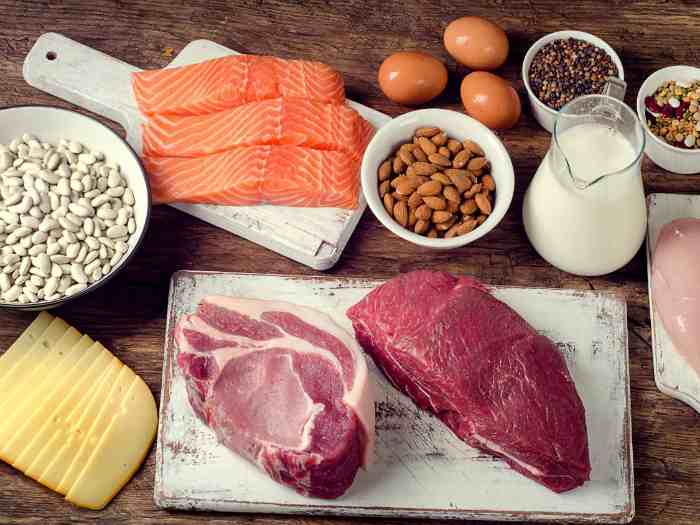
Recognized Protein Products:
- Poultry meat. Contents 17÷22 g (per 100 g);
- Other meat: 15÷20 g;
- Fish: 14÷20 g;
- Seafood: 15÷18 g;
- Legumes: 20÷25 g;
- Any nuts: 15÷30 g;
- Eggs: 12 g;
- Hard cheeses: 25÷27 g;
- Cottage cheese: 14÷18 g;
- Cereals: 8÷12 g;
Of all types of meat, beef will be in first place after poultry in terms of content: 18.9 g. After it, pork: 16.4 g, lamb: 16.2 g.
Among seafood, the leaders are squid and shrimp: 18.0 g. The richest fish in protein is salmon: 21.8 g, then pink salmon: 21 g, pike perch: 19 g, mackerel: 18 g, herring: 17.6 g and cod: 17.5 g.
Among dairy products, the positions are firmly held by kefir and sour cream: 3.0 g, then milk: 2.8 g. High-content cereals - Hercules: 13.1 g, millet: 11.5 g, semolina: 11.3 g.
Knowing the norm and taking into account financial capabilities, you can competently create a menu and be sure to supplement it with fats and carbohydrates.
The effect of protein on our body
Protein foods should become the basis of your daily diet. It provides us with the necessary microelements, allows us to reduce fat reserves, build muscle mass and ultimately normalize weight.

Proteins are responsible for such important functions for the functioning of the body as:
- Nourishing cells and enriching them with oxygen. Each person's body contains more than a billion cells, each of which has its own life cycle. Renewal occurs regularly, and it is for the construction of new ones that protein is needed, which is their basis;
- Ensuring muscle function. Protein is the basis of muscle and bone tissue. Its deficiency can lead to such sad consequences as muscle weakness, increased bone fragility and disruption of the musculoskeletal system;
- Energy supply. Proteins are digested much more slowly than carbohydrates, so they leave you feeling full for a long time;
- Strengthening the immune system and maintaining normal hormonal levels. A significant part of the hormones responsible for the normal functioning of internal organs consists of proteins. A lack of protein will certainly affect your overall well-being;
- Stimulates the nervous system and maintains the tone of the circulatory systems. Hemoglobin, which is the main component of blood, is also inherently an iron-containing protein. It performs a vital function: it delivers oxygen from the lungs to the tissues and removes carbon dioxide back. Changes in the level of hemoglobin in the blood lead to many diseases, primarily anemia.
Proteins also act as catalysts for chemical reactions in the body and are guardians and relays of genetic information. That is why it is so important to include protein products in your diet, and primarily of animal origin.
A lack of protein can lead to such unpleasant consequences as:
- Decreased immunity and increased susceptibility of the body to infections;
- Disruption of the digestive and cardiovascular systems;
- Decreased muscle tone up to muscle atrophy;
- Deterioration in the quality of sexual life;
- General malaise and weakness.
Protein deficiency is especially dangerous for children. This leads to a slowdown in the growth and overall development of the child, since this substance is the basis for the formation of muscle mass, bones and body cells. Therefore, it is very important that the child’s diet includes animal and plant foods high in protein. Vegetarianism for children of preschool and primary school age is extremely undesirable.
Protein ratio in diet
The proportion of proteins, fats, carbohydrates in a healthy diet should be (in grams) 1:1:4. The key to balancing a healthy dish can be presented differently: proteins 25-35%, fats 25-35%, carbohydrates 30-50%.
At the same time, fats should be healthy: olive or flaxseed oil, nuts, fish, cheese.
Carbohydrates on the plate include durum pasta, any fresh vegetables, as well as fruits/dried fruits, and dairy products.
Proteins per serving can be combined as desired: plant + animal.
Amino acids contained in protein
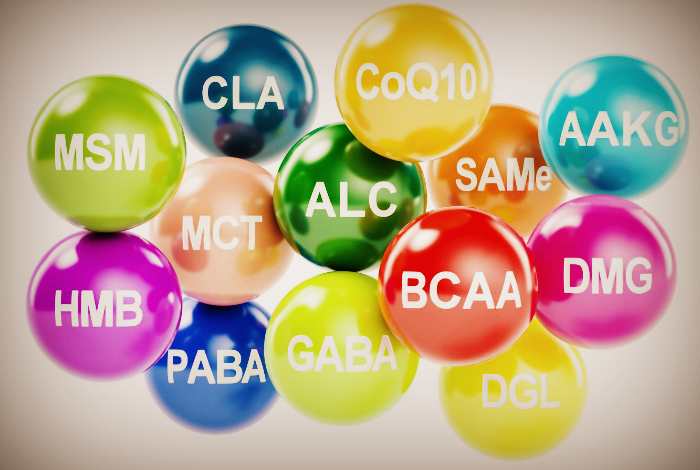
Replaceable ones can be synthesized by the body itself, but their supply from the outside is never superfluous. Especially with an active lifestyle and heavy physical activity.
All of them are important, without exception, the most popular of them are:
Alanin. Stimulates carbohydrate metabolism, promotes the elimination of toxins. Responsible for “cleanliness”. High content in meat, fish, dairy products.
Arginine . Necessary for the contraction of any muscles, healthy skin, cartilage and joints. Ensures fat burning and immune system function. Found in any meat, milk, any nuts, gelatin.
Aspartic acid. Provides energy balance. Improves the functionality of the central nervous system. Beef and chicken dishes, milk, and cane sugar replenish energy resources well. Contained in potatoes, nuts, cereals.
Histidine. The main “builder” of the body is transformed into histamine and hemoglobin. Quickly heals wounds and is responsible for growth mechanisms. Relatively high in milk, cereals and any meat.
Serin. A neurotransmitter, indispensable for the smooth functioning of the brain and central nervous system. Found in peanuts, meat, cereals, soybeans.
With proper nutrition and a proper lifestyle, the body will have all the amino acids for the synthesis of “cubes” and modeling health, beauty and longevity.
What are M and G?
Antibody tests are not methods for diagnosing the disease, but are necessary to assess the immune response in those who have recovered or been vaccinated. You should not interpret the results yourself. They need to go to the doctors.
There are several types of immunoglobulins, but in the context of COVID-19, immunoglobulins M and G are of primary importance.
IgM is one of the first to respond to the introduction of coronavirus into cells. They are large, clumsy, shaped like five connected slingshots that hold the pathogen (that is, the virus), preventing it from reproducing. At the same time, they activate a chain of other parts of the immune response, helping the body fight infection.
IgG is lighter, there are many more of them, and they more skillfully counteract the pathogen. And they remain in the body longer, providing a long-term immune response. It is not yet clear to science how long protective antibodies can remain in the blood. Much depends on the individual reaction of the immune system. Now they are talking about a period of 6-8 months.
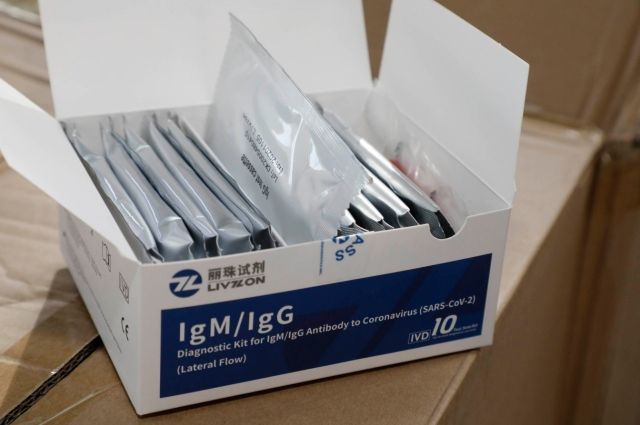
What kind of scam is there in selling coronavirus antibody tests? More details
What does a lack of protein in the body lead to?
- Frequent infectious diseases, weakened immune system.
- Stress and anxiety.
- Aging and slowdown of all metabolic processes.
- Side effect from the use of certain medications.
- Malfunctions of the gastrointestinal tract.
- Injuries.
- Meals based on fast food, instant products, and low-quality semi-finished products.
A deficiency of any one amino acid will stop the production of a particular protein. The body is designed on the principle of “filling voids”, so the missing amino acids will be extracted from other proteins. This “rearrangement” disrupts the functioning of organs, muscles, heart, brain and subsequently provokes disease.
Protein deficiency in children inhibits growth and causes physical and mental disabilities. The development of anemia, the appearance of skin diseases, pathologies of bone and muscle tissue is not a complete list of diseases. Severe protein dystrophy can result in marasmus and kwashiorkor (a type of severe dystrophy due to a lack of proteins).
Excess protein: causes, symptoms
An excess of proteins is an excessive accumulation of processed products in the body. The main reason for the appearance of excess protein is poor nutrition, in which the consumption of protein foods significantly predominates over carbohydrate and fatty foods.
Those at risk for the disease include meat eaters or people who practice protein diets. Also, an excess of protein is provoked by the presence of diseases of the endocrine system, genetic abnormalities or metabolic disorders. An excess of proteins disrupts the functioning of human organs and leads to failure in vital systems.
Symptoms indicating the presence of a problem have been identified:
- joint pain;
- tooth decay;
- decreased immunity;
- lower back pain;
- weight gain;
- fatigue and others.

Excess protein can cause a heart attack. If there are symptoms of protein overload, it is necessary to exclude protein foods from the diet and undergo a course of treatment.


